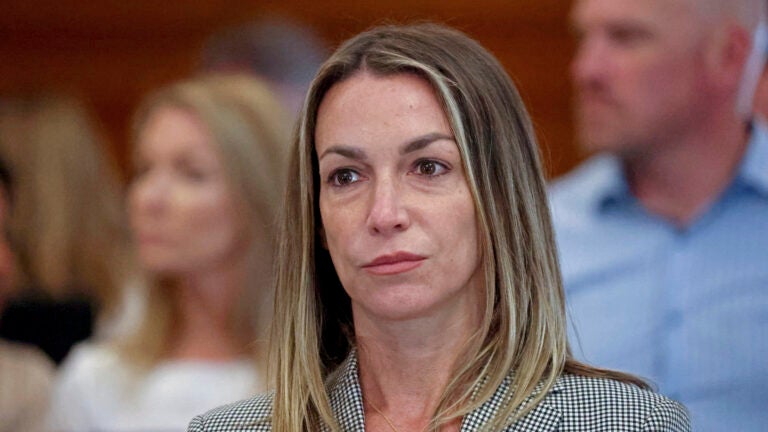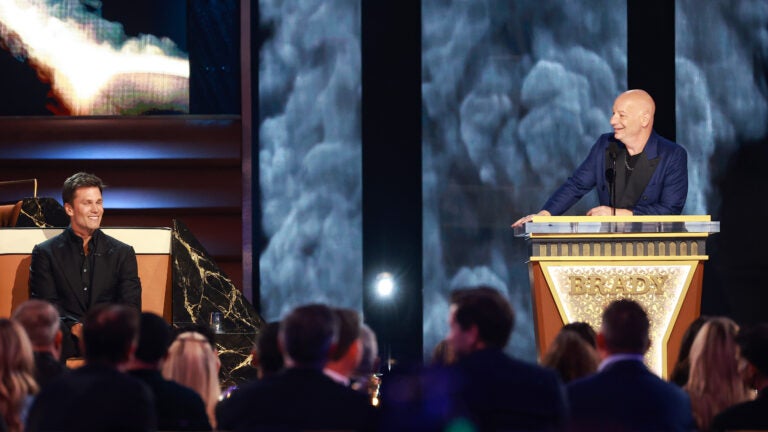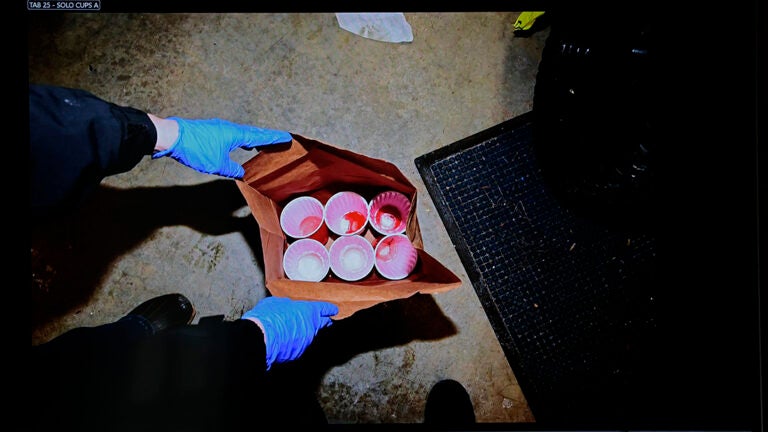A conversation with Dr. Howard Hiatt, a founder of the Brigham Division of Global Health Equity

Dr. Howard Hiatt/Courtesy photo
If Partners in Health founder Dr. Paul Farmer had been recruiting someone to help him and colleagues create a first-of-its-kind physician training program in global health, these are the qualities he would have looked for: Experience caring for patients, not just in academics. A resume that showed leadership. And, ideally, a history in building a new medical field from scratch.
“He would really have to be sweet and avuncular and love mentoring,’’ Farmer said. “And throw in indefatigable.’’
It was his good fortune that Dr. Howard Hiatt, the man who in the early 2000s pledged his help to Farmer and Partners in Health co-founder Dr. Jim Yong Kim, possessed those attributes and more, Farmer said.
Hiatt, who at 87 is associate chief of what is now Brigham and Women’s Division of Global Health Equity, had been a leading molecular biologist in that field’s early days. He led the department of medicine at the former Beth Israel Hospital and spent a dozen years as dean of the Harvard School of Public Health.
In the early 2000s, Farmer and his colleagues sat at lunch in Peru, with Hiatt and his wife, Doris, and discussed their vision for the division. No other teaching hospital had committed such resources to global health. But, Farmer said, “we knew that other hospitals would follow suit.’’
In the decade since it was created, with Hiatt doing much of the administrative lifting to get it off the ground, the division has galvanized the work of Partners in Health, a Boston-based nonprofit focused on addressing poverty and disease around the world. And it made the Brigham a leader in the field of global health.
Since 2004, 43 physicians have been trained in internal medicine and global public health through a residency program named for the Hiatts, or are in training now. Many work in Haiti and Lesotho and other places where Partners in Health is focused.
The Brigham celebrated Hiatt’s work and the division’s 10th anniversary during a dinner at the Fairmount Copley Plaza Tuesday night. I sat down with Hiatt the next day in his office, where photos of his grandchildren and his mentors line the walls. Below is our conversation, edited for clarity:
You’ve had such a storied career. Maybe we can start at the beginning. Why did you decide to pursue medicine as a young man?
I don’t really remember when I didn’t want to go into medicine. So, to tell you that it was an activity that would make my mother proud is stating the truth, but I don’t know that that was the reason. I’ve been really in medicine since I was an undergraduate, and I decided, yes, that’s what I wanted to do.
It was well into the Second World War. At that time, there was a need for doctors, and I could combine both my interest and the express need on the part of the government. … I’ve been lucky. I’ve had three really quite different careers in medicine.
I think I could count more than three.
I started not being sure what I wanted to do. I thought I’d be a general practitioner, at one stage. But, you know so much of what has happened to me — and I suppose so much of what has happened to you — has been, in part, chance.
I, at a very early stage in my career, had an opportunity to go to the National Institutes of Health in Bethesda. When I arrived, the hospital where I was going to work was not quite finished. There was a strike going on. I found my way into the laboratory of a scientist, a biochemist, who really proved to be extremely important to me.
I had never heard of what he was doing and would never have gotten into his lab had there not been this strike. But when I went into his lab, he opened my eyes to what science meant, what it could be. For me, that was, in retrospect, probably the most important thing that ever happened to me.
It did two things for me. It really made me aware of areas that I had no appreciation for, but it also made me aware of how important it was to find a mentor. His name was [Dr. Bernard] Horecker.
At that point you’d been through medical school. What was it about Horecker’s approach to science that was so different from what you had seen before?
I’d had the courses that one needs in order to graduate from medical school. They were dull. I had the courses at college that permitted me to apply to medical school. That was even more dull.
Horecker showed me how one could ask a question and get an answer. And how meaningful those questions could be. And how crucial the opportunities to get answers were.
So, I spent two years at the NIH. I came back to Beth Israel Hospital as a very junior member of the faculty. Meanwhile, I had started research with him.
Two or three years after I came back here, he said to me, “You know, if you’re willing to be asking questions about cancer and about the science of cancer, you’ve got to be aware of this new field. It’s called molecular biology.’’ He said the center of molecular biology now is Paris, at the Institut Pasteur. He said, “I’m going to be there next year.’’ So he went there, and while he was there he talked to people there about me. When he came back he said, “If you want to go, there’s an opportunity.’’
There I was, with a wife and three children – aged 11, 9, and 5 – and we packed up and went to Paris. The work that I did was on something that proved to be messenger RNA. … I went back to Boston, and now thanks to my mentor, Bernie Horecker, my whole point of view as to what constituted science and what I should be doing changed.
Less than two years later, Herrman Blumgart retired, and I was made the Blumgart professor [and chairman of the Department of Medicine] at a very young age. Here now, I had an opportunity to build a department that focused on medical care, but included as a part of that focus was an understanding of disease that molecular biology now made possible.
I then recruited a group of even younger people … all trained in pretty sophisticated science and all very eager to see that science translated into an understanding of human illness and a capacity to do something about it. That went well, and pretty soon I began to get offers of deanships.
I was about to go to Yale as the dean of the medical school when the then-new president of Harvard asked me if I would consider staying and become dean of the Harvard School of Public Health.
How did the school change under your tenure?
I brought a lot of what had never been in a school of public health.
Don [Berwick, who would become administrator of the Centers for Medicare & Medicaid Services] and Harvey [Fineberg, now president of the Institute of Medicine] — I first met them when I was at Beth Israel and they were fourth-year Harvard medical students. I recruited them to the School of Public Health.
The Department of Biostatistics when I arrived had three people in it, all of whom were ready to retire. It’s now got a large group of terrific young people and senior people.
I stayed there — and that’s a part of the story — I went there for five years. And at five years, I said to the president, “I’m going to leave.’’ And he said, “You can’t. You’ve made a commitment to Fineberg and Berwick,’’ and he named a few others. “What happens to them if you leave?’’ So I stayed for 12. At that point, I came to the Brigham.
I want to get to your work in global health there, but first I’d like to ask you about another matter you worked on. It’s been two decades since you and Paul Weiler and others published the book “A Measure of Malpractice,’’ still seen as one of the most comprehensive examinations of the issue. Where are we on medical liability today? What have these 20 years brought?
I wish we were further along. When Weiler and I finished the studies of medical injury and wrote the book “A Measure of Malpractice’’ — we did this work in the state of New York. The commissioner of health in the state of New York at that time was a man named David Axelrod, not the David Axelrod who has worked with Obama.
This was a remarkable man who was working for then-Governor Mario Cuomo. I knew him as a medical student, when I was at Beth Israel and he was at Harvard Medical School. We became friends. When he heard that Weiler and I were ready to do a study of medical injury … he said, “The governor would love to have you do this in New York. We’ll provide you with the sites where you can do this and the money with which to do it.’’
Why were you even looking at malpractice then?
When I was dean of the School of Public Health, my closest friend was dean of the law school at Harvard. And we said, here’s a topic where the two schools could work together.
Axelrod had committed to the governor that he would produce, with the results of our study, suggestions for legislation. That’s why we were interested in doing this.
He and I met with the press, and he talked about the legislation that New York would be offering. A week after, he was testifying about something else in Washington, before a Senate committee, and he had this massive stroke and never recovered. It was a tragedy.
His successor as commissioner chose not to follow that route and while there are articles and books, the legislation remains to be put forward.
When I finished with that, I was now at the Brigham. I met two young men who were residents. One was named Paul Farmer. And the other was named Jim Yong Kim.
As dean of the School of Public Health, I had been interested in global health but not much went on in that area then. It was really these two young people who came to ask me for help. They had just completed, or were completing their work on multiple-drug-resistant tuberculosis in Peru, and I got involved.
What made you say, this is something the hospital should embrace? There wasn’t a model for a global health division at other academic medical centers.
You can’t be exposed to Paul Farmer or Jim Kim and not think that this is the thing you should do. I was seduced by those two guys, and that became my next career.
It’s been more than 10 years since I got involved. It was in 2001 that the then-chairman of medicine [Victor Dzau] said we should have a program in global health. That was the beginning and [Tuesday night] was the celebration.
It has opened a whole new area, a commitment on the part of this major teaching hospital, this major medical school, this major 501(c)(3) organization called Partners in Health, to the problems of impoverished people throughout the world. It has attracted the most extraordinary group of young people as global health residents that have ever – I can’t say, existed, because how can I be sure, but I think it would be a pretty good guess that there’s never been a group like this, just amazing.







Conversation
This discussion has ended. Please join elsewhere on Boston.com